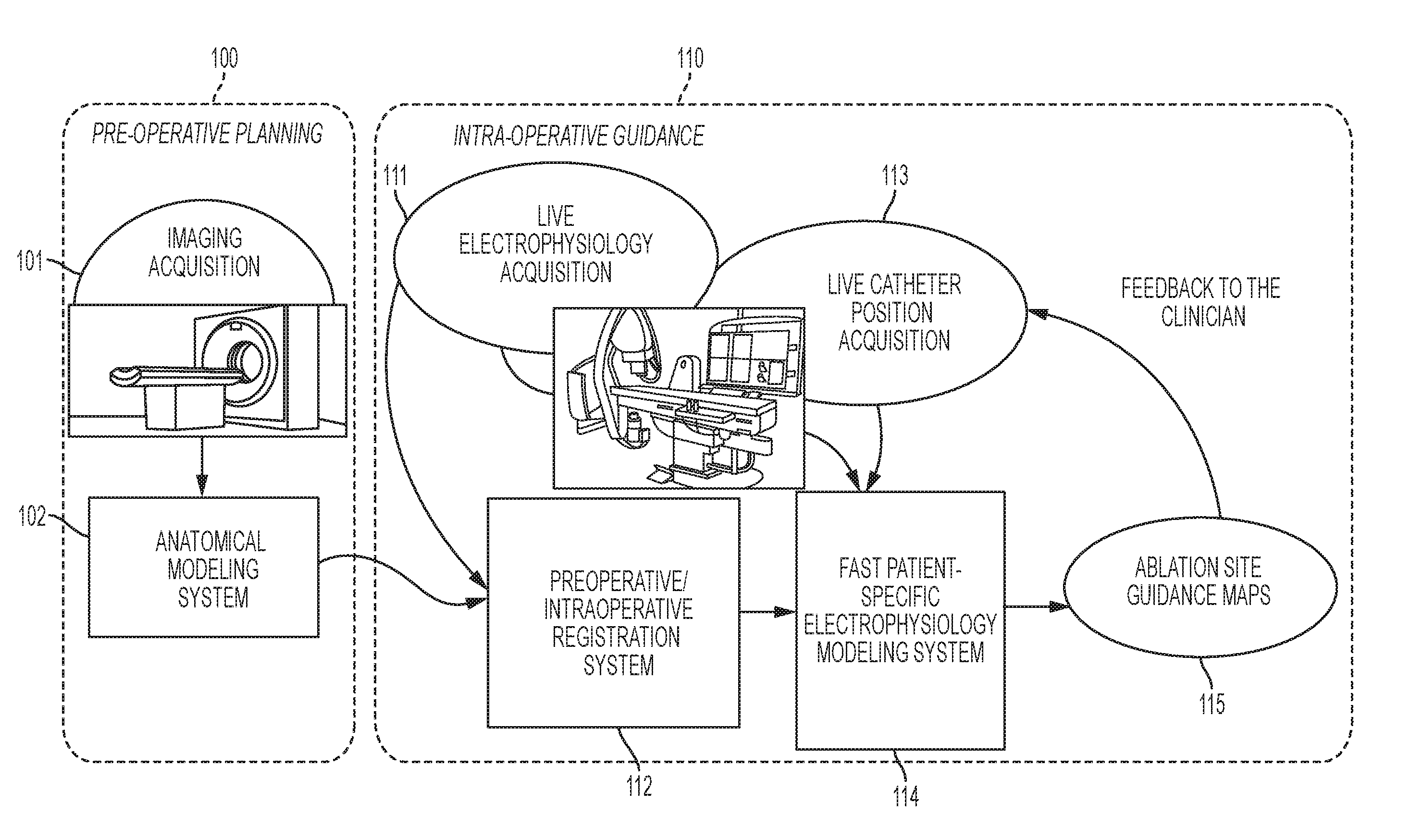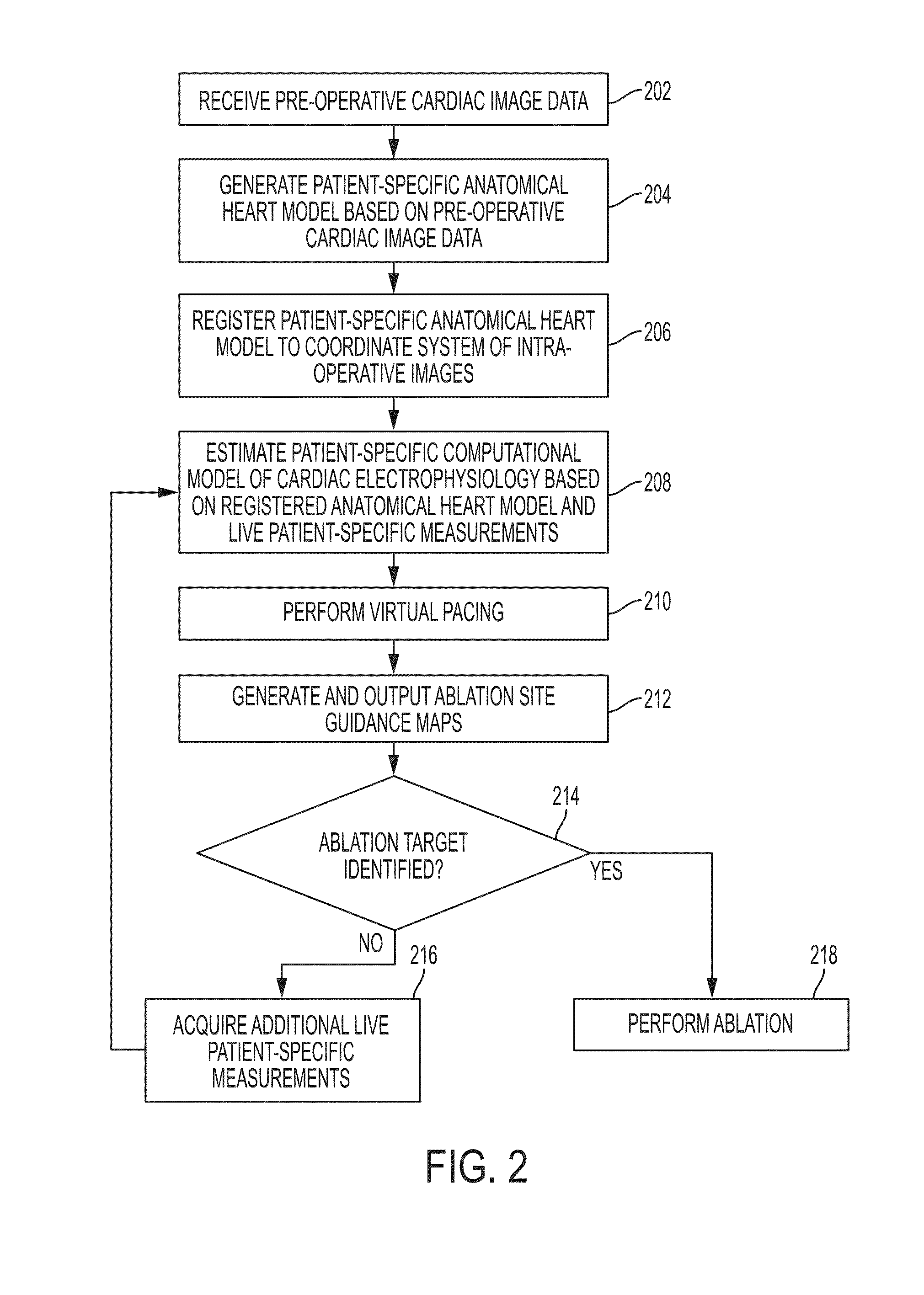System and method for patient specific planning and guidance of ablative procedures for cardiac arrhythmias
a technology for ablative procedures and patients, applied in the field of patient specific planning and guidance of ablative procedures for cardiac arrhythmias, can solve the problems of high morbidity associated with icd shock, insufficient protection against scd, and difficulty in finding the region to ablate in post myocardium infarction patients, so as to minimize life-threatening risks for patients and better target ablation sites
- Summary
- Abstract
- Description
- Claims
- Application Information
AI Technical Summary
Benefits of technology
Problems solved by technology
Method used
Image
Examples
Embodiment Construction
[0020]The present invention relates to patient-specific planning and guidance of ablative procedures for cardiac arrhythmias using medical imaging data. Embodiments of the present invention are described herein to give a visual understanding of the methods for patient-specific modeling and simulation using medical imaging data. A digital image is often composed of digital representations of one or more objects (or shapes). The digital representation of an object is often described herein in terms of identifying and manipulating the objects. Such manipulations are virtual manipulations accomplished in the memory or other circuitry / hardware of a computer system. Accordingly, is to be understood that embodiments of the present invention may be performed within a computer system using data stored within the computer system.
[0021]In post myocardium infarction (MI) patients, slow conducting zones around scars can make the electrical wave re-enter into regions behind the normal electrical ...
PUM
 Login to View More
Login to View More Abstract
Description
Claims
Application Information
 Login to View More
Login to View More - R&D
- Intellectual Property
- Life Sciences
- Materials
- Tech Scout
- Unparalleled Data Quality
- Higher Quality Content
- 60% Fewer Hallucinations
Browse by: Latest US Patents, China's latest patents, Technical Efficacy Thesaurus, Application Domain, Technology Topic, Popular Technical Reports.
© 2025 PatSnap. All rights reserved.Legal|Privacy policy|Modern Slavery Act Transparency Statement|Sitemap|About US| Contact US: help@patsnap.com



